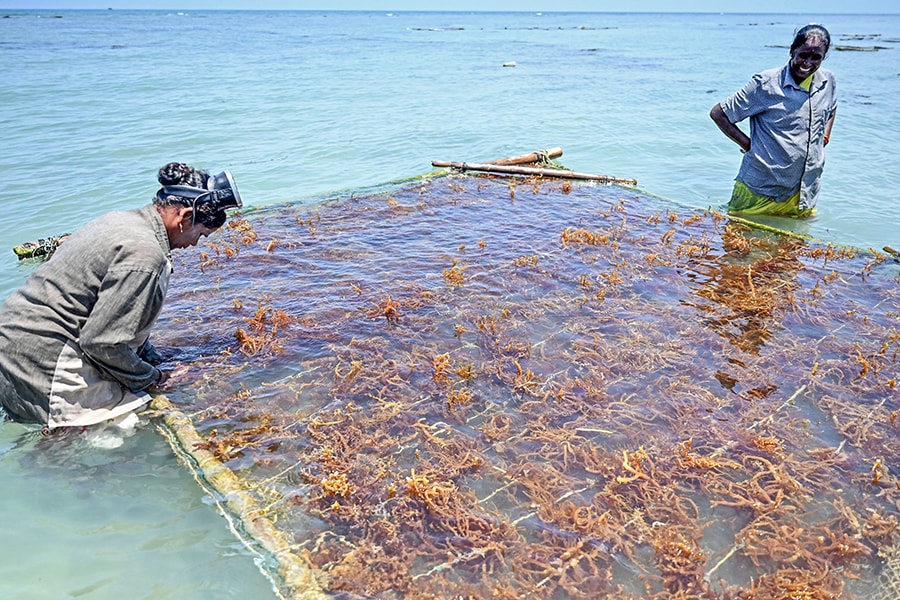
Indian women show the way for cultivating 'eco-miracle' seaweed
Authorities are looking into how seaweed farming could help reduce the impact of greenhouse gas emissions, reverse ocean acidification and improve the marine environment, as well as provide a sustainable livelihood for marginalised coastal communities
 Women work to cultivate fronds of seaweed on a bamboo raft in the waters off the coast of Rameswaram in India's Tamil Nadu state.
Women work to cultivate fronds of seaweed on a bamboo raft in the waters off the coast of Rameswaram in India's Tamil Nadu state.
Image: Arun Sankar / AFP
Draped in a colourful saree and shirt, Lakshmi Murgesan dives into the azure waters off India's southern coast to collect seaweed, which is being hailed by scientists as a miracle crop that absorbs more carbon dioxide than trees.
India is the world's third largest carbon polluter, behind China and the US, and has yet to set a target date for its emissions to reach net zero.
But authorities are looking into how seaweed farming could help reduce the impact of greenhouse gas emissions, reverse ocean acidification and improve the marine environment, as well as providing a sustainable livelihood for marginalised coastal communities.
"I am doing this for my children... It requires a lot of hard work, but I am able to earn good profits from about four months of work," said Murgesan, who makes 20,000 rupees ($265) each month farming the fibrous macroalgae.







